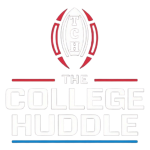
Project Rudy
Jack Swarbrick may have stepped down as Notre Dame’s athletic director, but he remains deeply involved in the evolving landscape of college sports, particularly football.
Recently, news emerged that Swarbrick and other influential figures—many from Disney and private equity—are working on a concept for a 70-team mega-conference, known as “Project Rudy.” This proposal envisions a super league consisting of teams from all four power conferences and Notre Dame, operating under a unified structure. The goal is to secure substantially increased revenue through shared TV deals, which would place all participating teams under a single financial umbrella, while potentially excluding the lower-tier programs in terms of television earnings.
The proposed league would have its own governance and an expanded playoff system. While the plan promises to boost revenue for those involved, the SEC and Big Ten may resist. Both leagues currently dominate the financial landscape of college football and may be reluctant to embrace a model that would level the playing field, even if it means turning down a significant increase in revenue. Despite potential opposition from these two conferences, most other entities would likely support the plan, as it offers more equitable revenue distribution and governance across the sport.
“Project Rudy” is just the latest indication of how rapidly college football could change. The plan involves a multi-billion-dollar proposal, backed by former Disney executives and funded by private equity firm Smash Capital. The project could see $9 billion injected into a new system that would restructure scheduling, expand the postseason, and introduce tiered revenue sharing.
With the College Football Playoff (CFP) expanding from four to 12 teams this season, the influence of conference realignment is already evident. Games that were once marquee nonconference matchups in the SEC and Big Ten have become conference games. These two leagues will split 59% of the CFP revenue moving forward. Under the new proposal, however, all games against Group of Five and FCS opponents would be eliminated, with the 70 schools being marketed as a single-entity media package. It remains unclear which 70 schools would be included, but the timeline suggests that “Project Rudy” could begin after major media rights deals expire around 2031.
Jack Swarbrick, a key architect of the 12-team playoff system, is among those leading this initiative. He, along with SEC Commissioner Greg Sankey, former Big 12 Commissioner Bob Bowlsby, and former Mountain West Commissioner Craig Thompson, was instrumental in shaping the expanded playoff format. The proposal also includes “multiple” automatic qualifying spots for SEC and Big Ten teams, an idea that was previously rejected when the 12-team playoff was developed.
Northern Illinois Athletic Director Sean Frazier, who has seen the “Project Rudy” presentation, commented, “It’s a great concept for the ‘haves,’ but the ‘have-nots’ are going to struggle.” Additionally, the project may face legal challenges from “Rudy Project,” a 40-year-old company that manufactures sunglasses for cyclists.
As SEC and Big Ten officials gather in Nashville to discuss the sport’s future, concerns about the growing power of these two conferences are increasing. One source familiar with “Project Rudy” remarked, “The current system is becoming more exclusionary. If you want to maximize college football’s value as the second-most popular sport in the U.S., you can’t disenfranchise three-quarters of the membership.”
There are now two primary reorganization proposals on the table. Last week, the College Student Football League (CSFL) was reintroduced by a group called College Sports Tomorrow. Their “Super League” plan proposes a 72-team “Power 12” conference, with 64 other teams in a “Group of Eight.” SEC Commissioner Greg Sankey, however, remains dismissive of these hypothetical proposals, stating, “We are already a super league. I deal with my reality, not what-ifs.”
Any major restructuring of college football would need approval from Sankey and Big Ten Commissioner Tony Petitti, who control the sport’s 34 most valuable brands. One member of College Sports Tomorrow, when asked how they plan to address the influence of Sankey and Petitti, replied, “We’ll buy them out.”
Private equity’s role in sports is growing, with the NFL recently allowing firms to invest up to 10% in teams. Earlier this year, Big 12 Commissioner Brett Yormark explored partnering with private equity firm CVC. However, the idea was ultimately rejected by Big 12 athletic directors and presidents. Concerns arose over what ownership stakes would look like, despite the proposal promising an infusion of up to $1 billion based on projections of the league’s increased media rights value.
Since 1999, various reorganization and playoff proposals have sought to unify college football under one structure. The “Super League” and “Project Rudy” represent the latest iterations in a long series of efforts to reshape the sport. As one member of College Sports Tomorrow noted, “College football is the second-most valuable sport in America, but it’s under-marketed, under-distributed, and under-monetized.”
The coming years will reveal which vision—if any—will define the future of college football.




